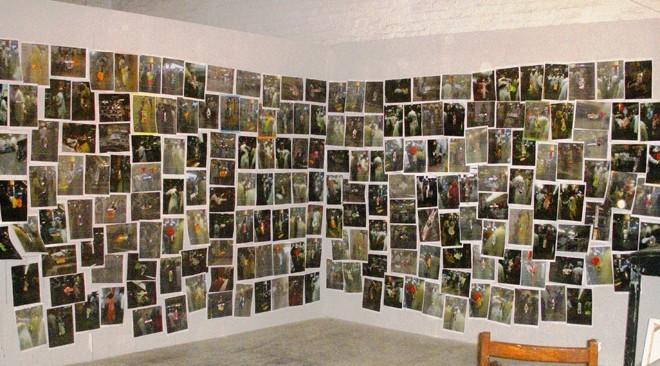

"Silence, please!" is a small sentence usually spoken loudly in classrooms or discreetly in operation theatres but is hardly employed in the context of art making, especially in relation to the present art practice which is loaded with theory, debate and disagreements.
The artists today are so conscious about the verbal discourse and conceptualising exercises that they try to match their creation with the latest philosophies and doctrines in the world of art.
Amid all this noise and words that, in most cases, move our attention away from images, the idea of showcasing works which demand formal contemplation and provide pictorial pleasure is an unusual occurrence. It is a way of reverting to elementary aspect of visual arts -- being ‘visual’ first, then anything else. This reminds one of what Frank Stella stated about his art that "it is what you see on the surface".
These ideas are manifested in the exhibition, titled ‘Silence Please,’ curated by Amna Hussain and being held at the Nairang Galleries from May 5-15, 2014. The exhibition comprises a total of 22 works by ten artists, from a range of generations, and working in a diversity of mediums and techniques. Thus, the show includes paintings by Zarah David, metal relief sculpture by Muhammad Umer, installation by Seher Jalil and a number of mixed media works by several other artists.
All these artists have been working independently but it is the curator Amna Hussain’s vision that has combined diverse art pieces into a comprehensive entity/display. In the show, one moves from one work to the other discovering common elements such as the purity of expression, minimal imagery and subtlety of method.
According to the curator, "The aim behind the show is to provide the viewer a calm, serene, peaceful and intimate environment to view and enjoy the art work. It will provide the viewer a chance to interact with the art work rather than other people."
What was intended by the curator Hussain appears to be happening within the exhibition because the way the art works converse with viewers or actually the other way round, these works are in dialogue with each other, too.
The plan of display has made each piece connected to the next, making a cohesive narrative -- about nothing.
But that ‘nothing’ is not devoid of sense, sensitivity and sensation because these works invite longer, deeper and serious involvement of the audience.
The most striking example in this term is ‘Zikr III,’ a large-scale ink on paper by Sadia Farooq. The work captures the spectators’ gaze in the web of white lines, which are made of word-like shapes and are placed on a black surface, as if spreading to infinity. Its title coincides with the imagery as well as the theme of the exhibition, since chanting in our culture can be audible or it may be performed quietly in one’s heart.
The idea of picking one motif and extending/exploring it is visible in the works by Sajid Ali Talpur. Tiny marks clustered on big surfaces look like vast field filled with growths of numerous kinds. However, the work moves from the physical to the ephemeral, invoking a sense of spiritual experience.
Similar concerns are evident in paintings by Mariam Hanif. Her use of colour and scheme of creating layers of shades in order to produce the effect of depth on flat surfaces seem effective; much like the canvases of Zarah David where smooth patches of strong colours reflect and present the feeling of serenity and calm.
The act of extending the potential of paint in Zarah’s canvases is found in the work of Minelle Gaya too but in a more daring manner. Composed in the form of walls of dilapidated houses, her mixed media works reveal the artist’s ability to employ a few colours and fabricate an aesthetically strong entity.
This is also seen in the metal relief of Muhammad Umer in which the artist, by hammering on a shiny sheet, has produced multiple views, reflections and textures.
Seher Jalil has adapted a different approach. In her installation, one locates recognisable imagery but her treatment of photographs from the airport transforms them into mere patterns, pieces of collage and blobs of pigments. The dimension of her installation also reduces the readability of her pictures, thus turning them into units of a bigger abstract visual.
The exhibition reminds us of a neglected part of our art that deals with formal issues despite -- or, perhaps, because of -- the social, cultural, religious and political problems of our times. The show suggests not the silence but the meditation on truth which is abstract but cannot be separated from the life or the lie we call Art!